1lumen selects and reviews products personally. We may earn affiliate commissions through our links, which help support our testing.
Fenix CL28R review
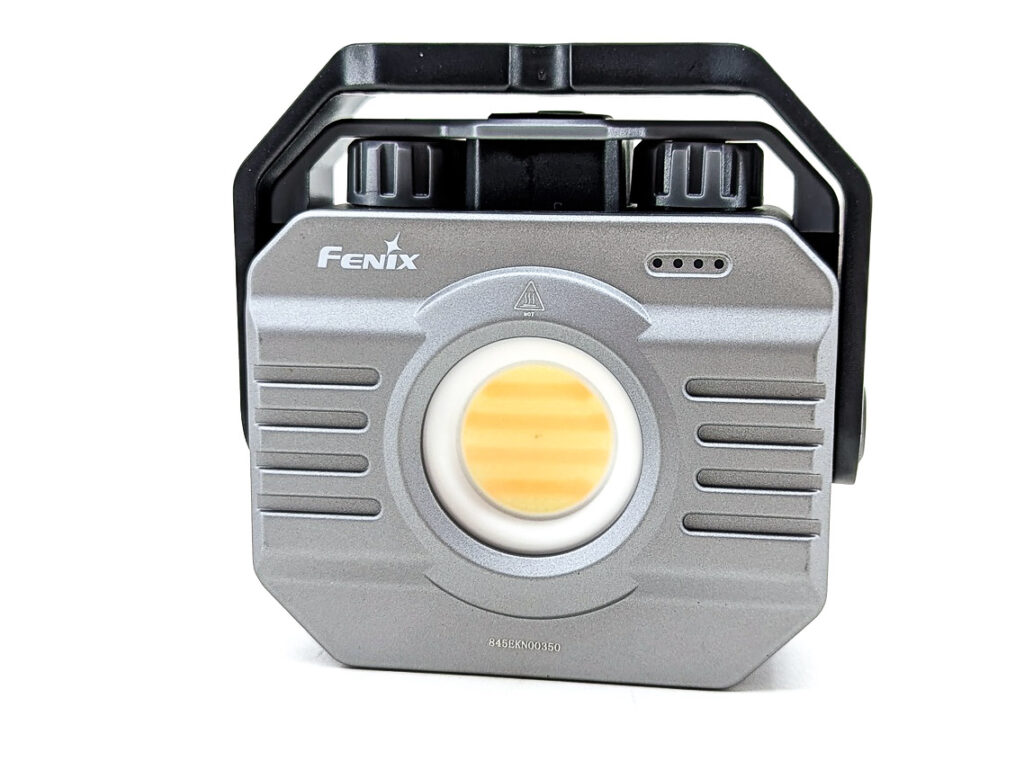
Fenix CL28R specs
| Brand & Model | Fenix CL28R |
|---|---|
| Flashlight category | Work light / lantern |
| LED | N/A (COB) |
| Max. output | 2000 lumens |
| Max. beam distance | 58 meters |
| Max. beam intensity | 880 cd |
| Battery config. | Built-in |
| Onboard charging | USB-C |
| Modes | Variable |
| Blinkies | Red flash |
| Waterproof | IP66 |
| Review publication date | March 2023 |
Review intro:
Fenix makes a huge array of lights. In fact, they have an actual PDF catalog on their website (I imagine it’s probably also distributed in paper form as well) that is 48 pages long and chock-full of products ranging from tiny EDC lights all the way up to a couple really big boys that I’ve been fortunate enough to check out: the Fenix LR50R 12,000 lumen monstrosity and the Fenix HT30R 1500m throw LEP. If you need a light, chances are that Fenix will have a nice offering to fill that need.
By and large, I really like Fenix – my first “real” flashlight was a Fenix (the 187 lumen E25 model, if you’re curious). From my experience, Fenix lights are really well designed, they use quality materials and finishes, have great constant-current drivers, and publish truthful ANSI specs. I’ve had the opportunity to review several different Fenix lights from their various lines, and I always come away impressed with their quality and attention to detail. Today marks something new for me though – this is the first time I’ve tested a Fenix lantern / work light. I find this kind of light to be pretty handy, especially when working on things around the house. If you’ve read our review of the Olight Odiance, the Fenix CL28R seems like a pint-sized version of that at first blush. Getting the CL28R up and running is really easy. Since it has a built-in battery, there’s nothing to do but twist the on/off knob and you’re in business!
Package quality.
The packaging for the Fenix CL28R is instantly recognizable as having come off the same line as the other Fenix models that I recently reviewed. They used the same design language, though new materials this time around: a showy black and orange carton constructed not of cardboard, but of shiny plastic. I think it’s great that Fenix is using consistent packaging as it helps drive brand recognition. Arranged in the tray was:
- Fenix CL28R
- USB-C charging cable
- Split ring
- Manual
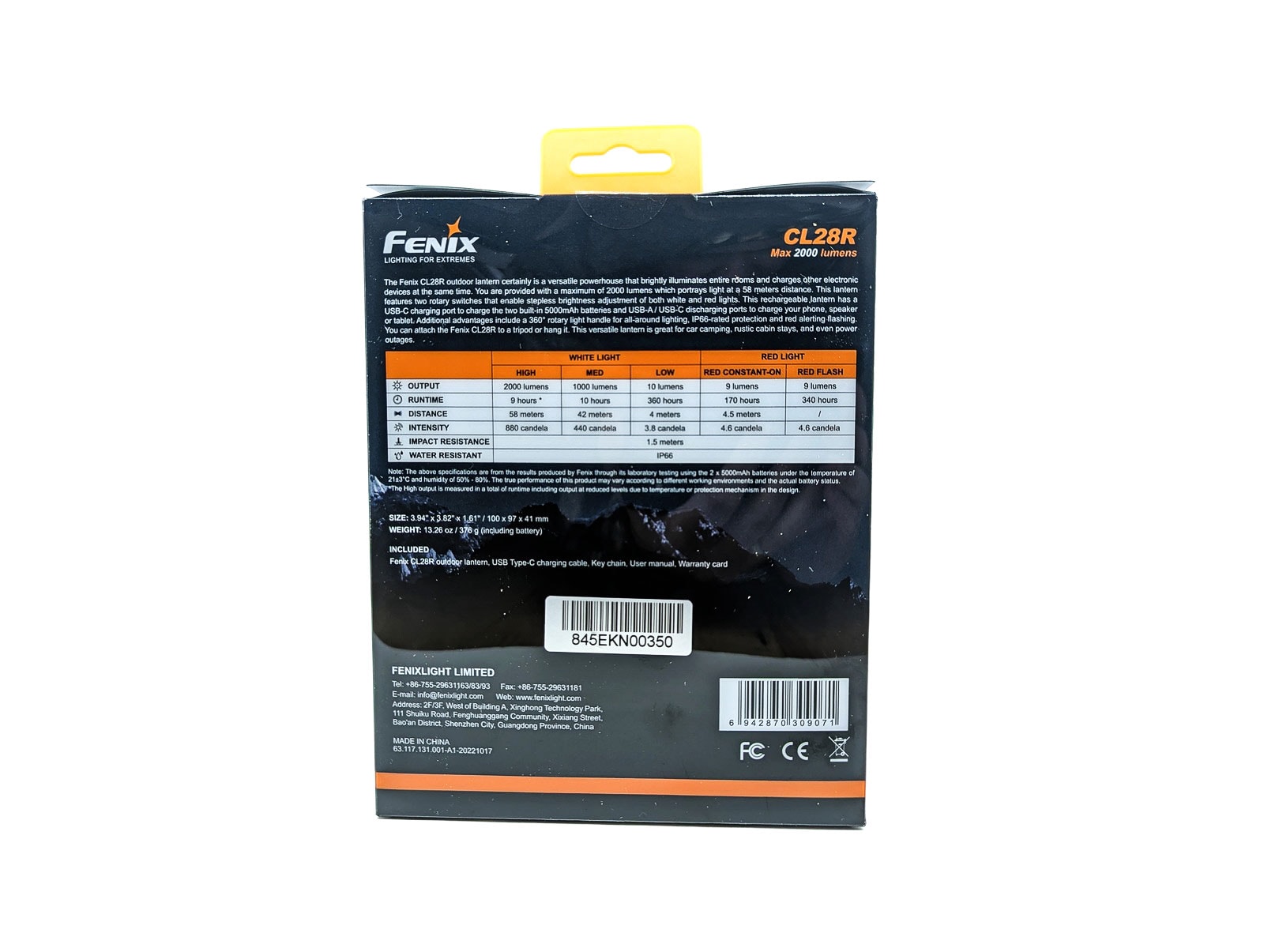
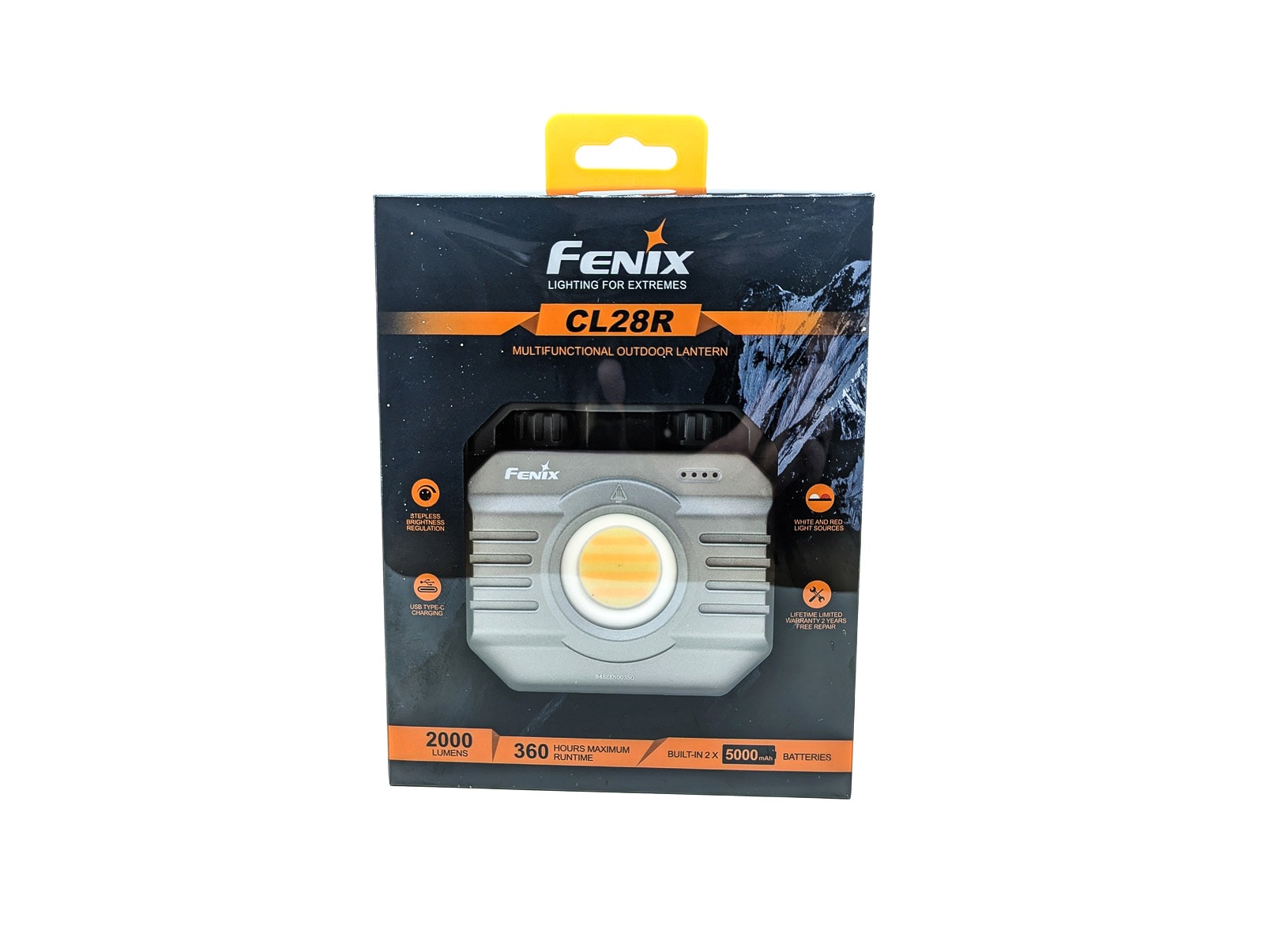
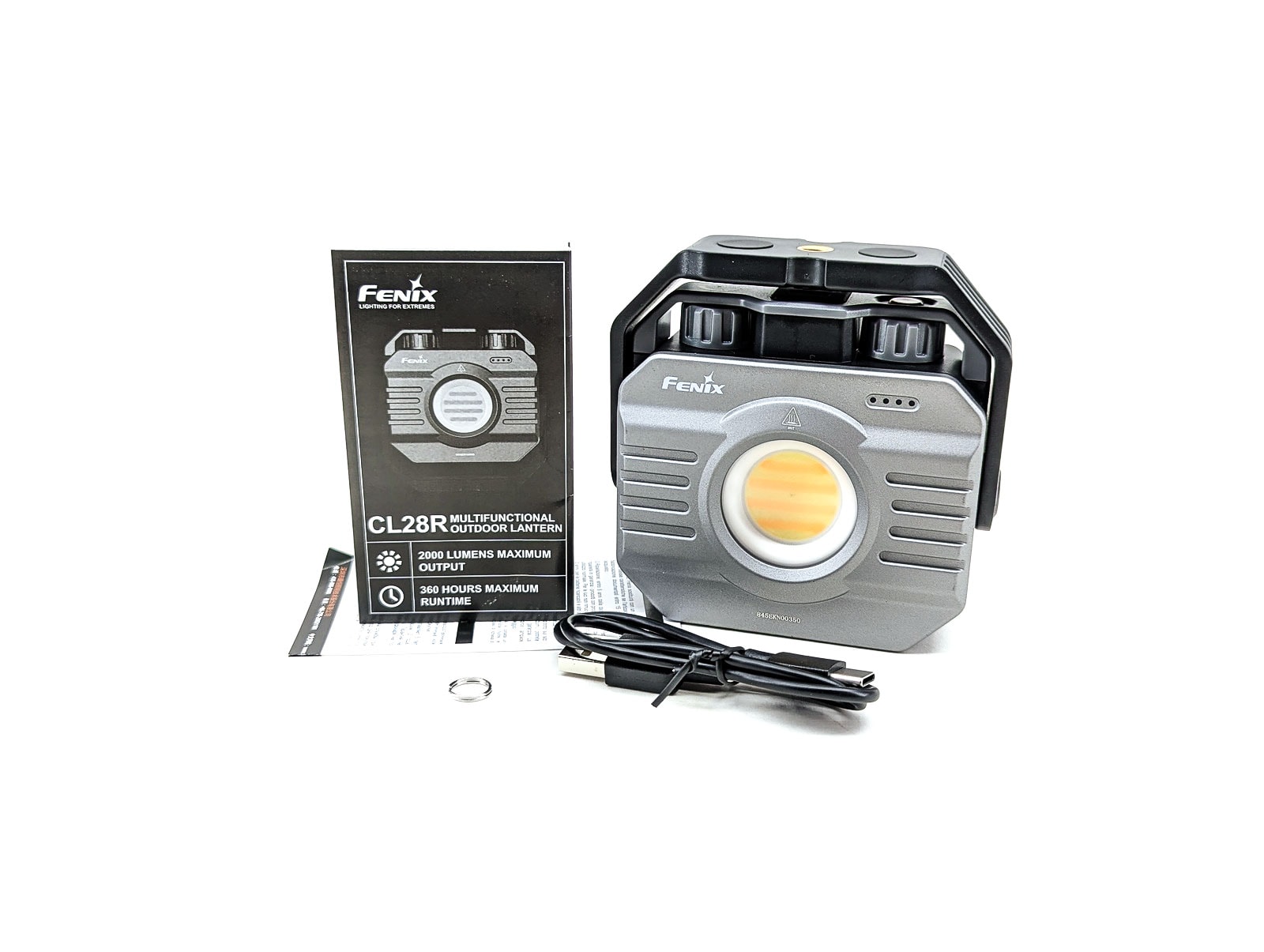
Flashlight in use
The Fenix CL28R isn’t an ordinary flashlight, as is obvious at your first glance. It’s definitely work light material: flat, directional, diffused, and utilitarian looking. The square body light is mounted in a yoke that provides tilt flexibility. The bottom of that yoke has a few things going for it: a tripod mount right in the middle, a lanyard / ring mount point towards the middle, and two strong magnets covered by grippy rubber pads on either side of the tripod mount. So you can easily mount it to a tripod, set it on the ground/table, or affix it to a ferrous metallic surface.
To me, lights like this have as many uses as your creativity allows. While camping, you could easily position this up high on a pole or tripod and have it pointed down towards a picnic table or the general campsite area. You could carry it in a vehicle to serve many purposes: provide illumination while changing a flat tire or use the flashing red mode to call for help if you’re stranded. I really could have used it over the winter for a spontaneous nighttime broom hockey game on an unlit ice rink – the only light I had with me was the ThruNite T1S, which worked ok, but a wide-spread utility light would have been a lot better.
I just used the CL28R while working on my house’s electrical system. I’m changing out all of the electric outlets for tamper-resistant models. When you turn that circuit breaker off, sometimes the lights are tied into the same breaker and you lose lights, too. The Fenix CL28R has been perfect for lighting up the work area while I’ve got the electricity off. The CL28R would also be right at home helping out with power outages, a late-night game of cornhole, or pretty much anything your mind thinks up. The Fenix CL28R is a great all-around utility light.

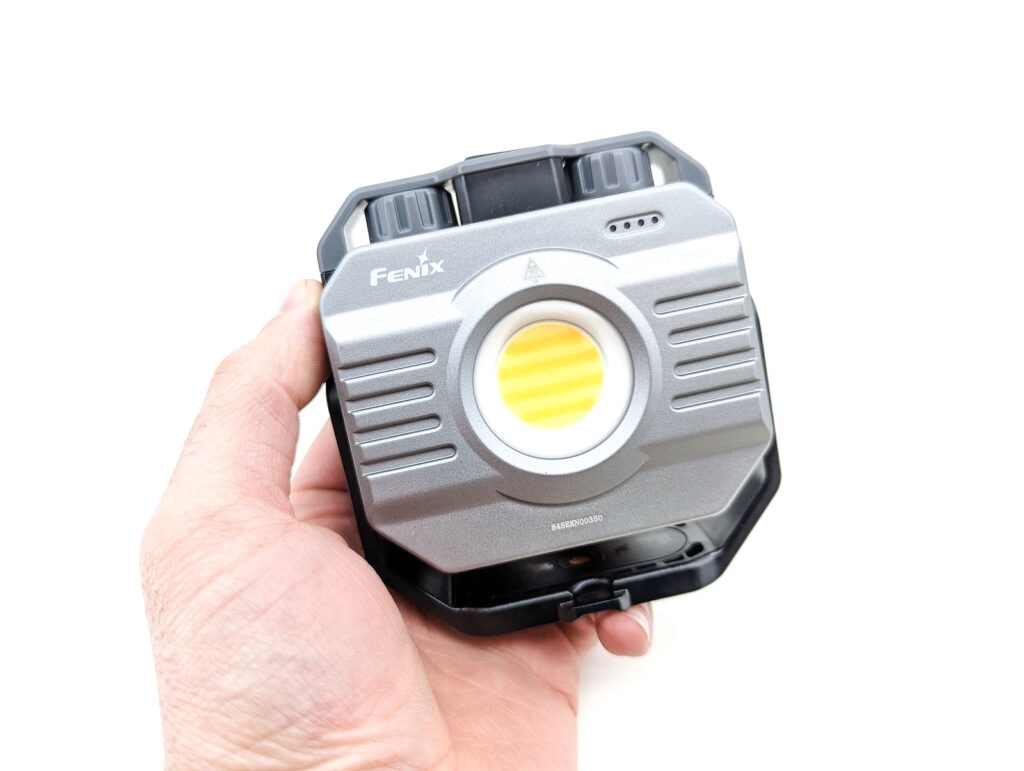
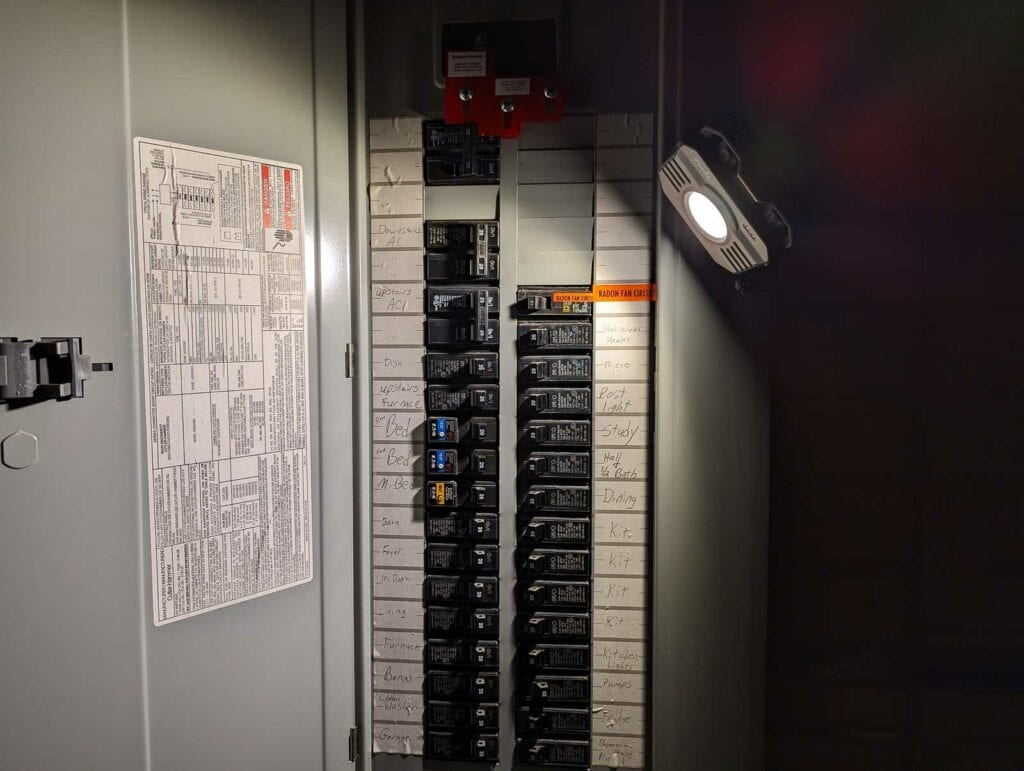
Build Quality and Warranty
I have never been let down by Fenix’s built quality. They seem to pay a lot of attention to detail and make sure everything is near-perfect. The CL28R is no exception. Of course, it’s not your typical flashlight, but it still seems to portray the usual Fenix built quality. Everything feels solid, the machining is smooth, and mating surfaces are even. The two rotating switches are smooth and feel great. I thought the LED’s COB surface may have had a defect right in the middle, but now I have realized my foolishness (check out the next section to see why).
Warranty:
- 15 days from date of purchase: replacement from Fenix for manufacturing defects
- 5 years from date of purchase: free repairs
- Lifetime maintenance, with customer covering the cost of parts
- Extra 6 month warranty period for products registered on Fenix’s website
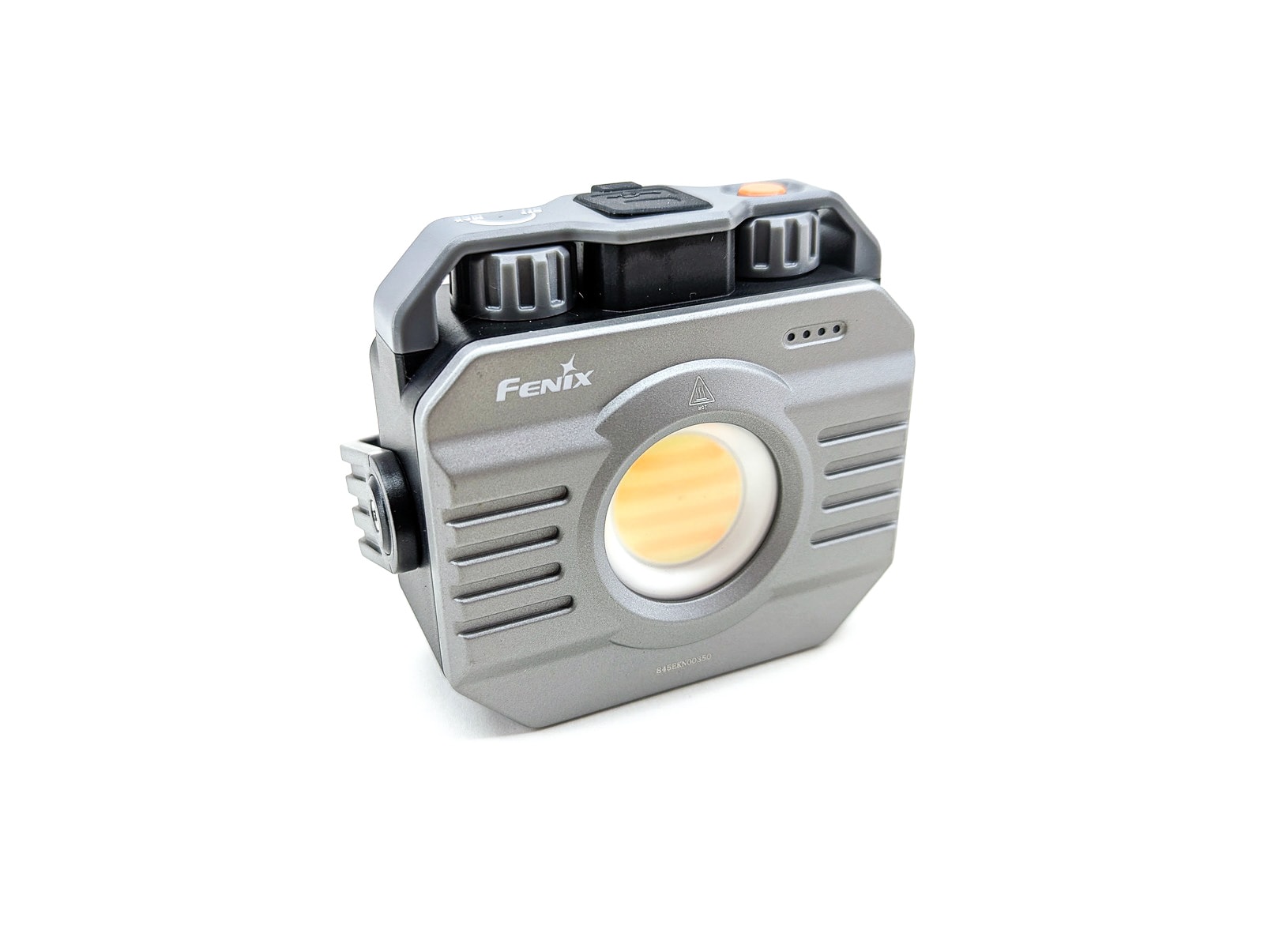
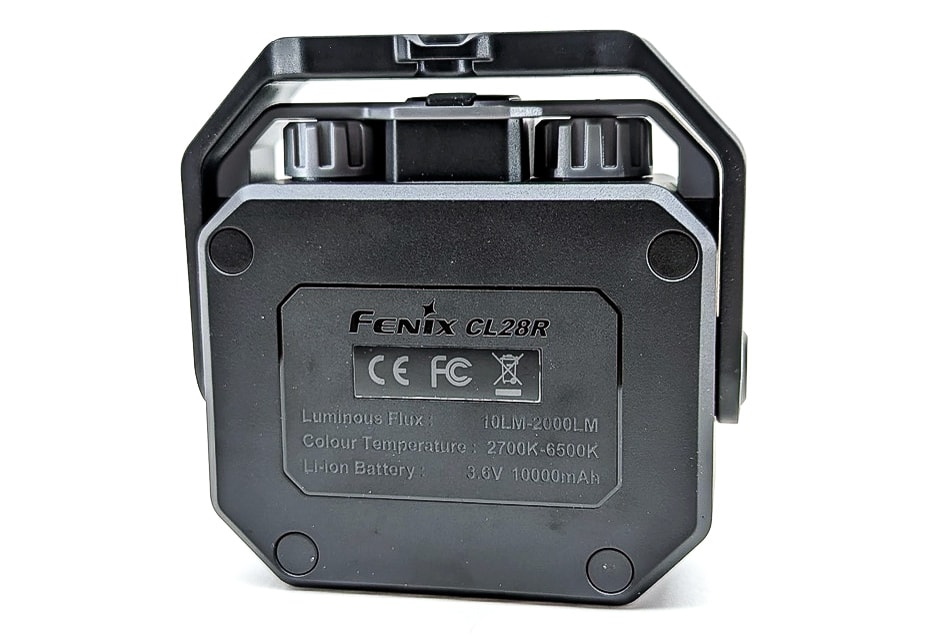
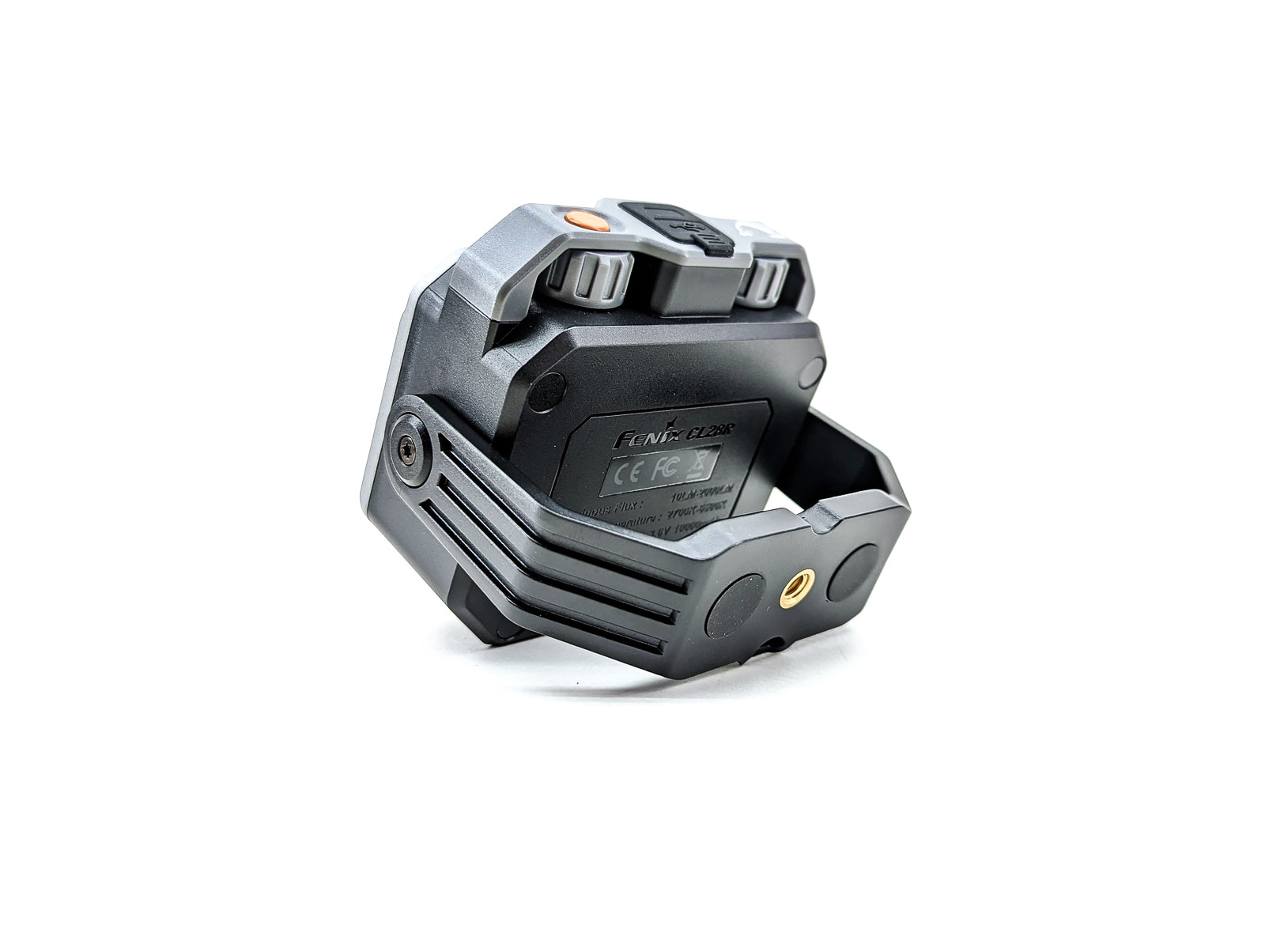
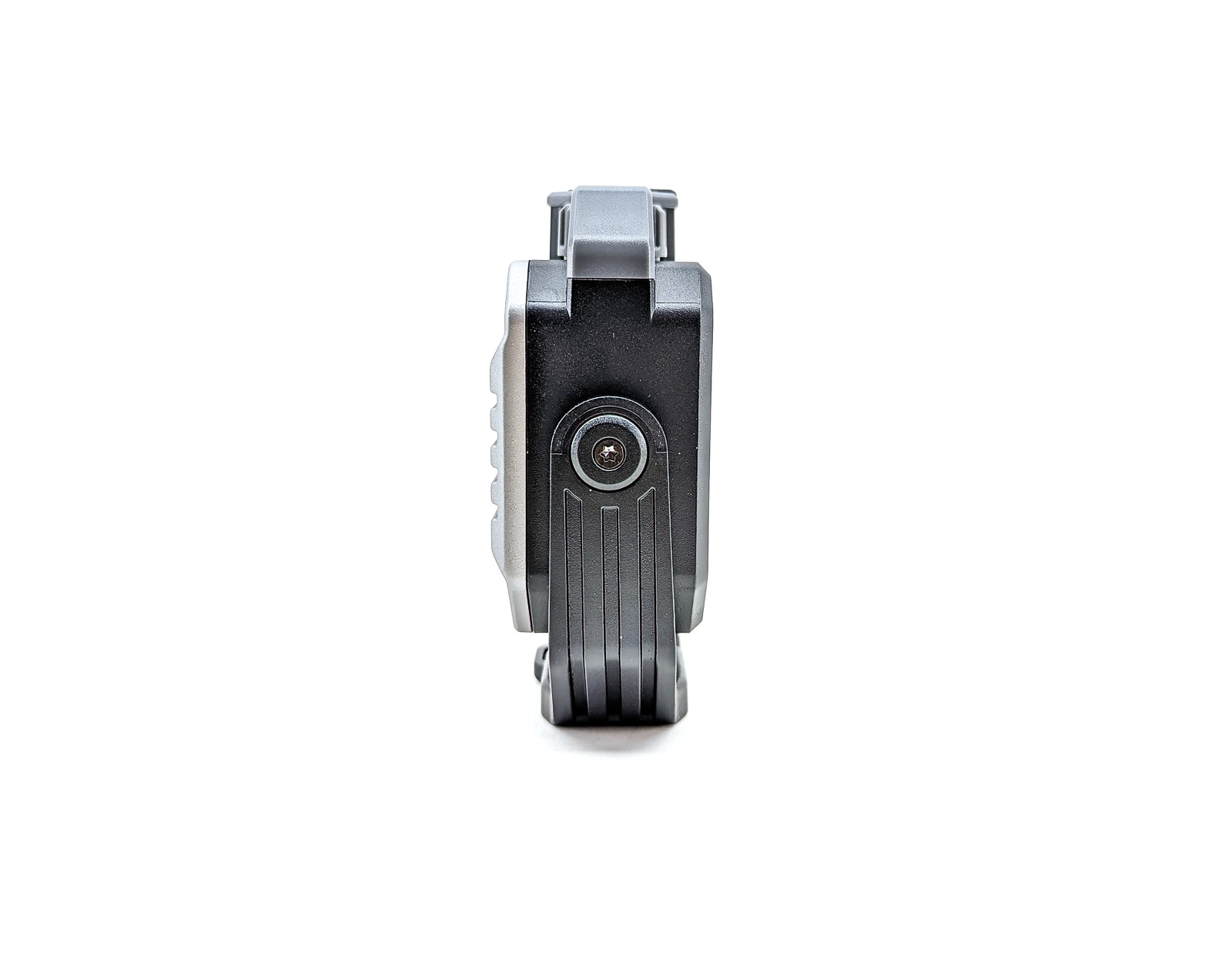
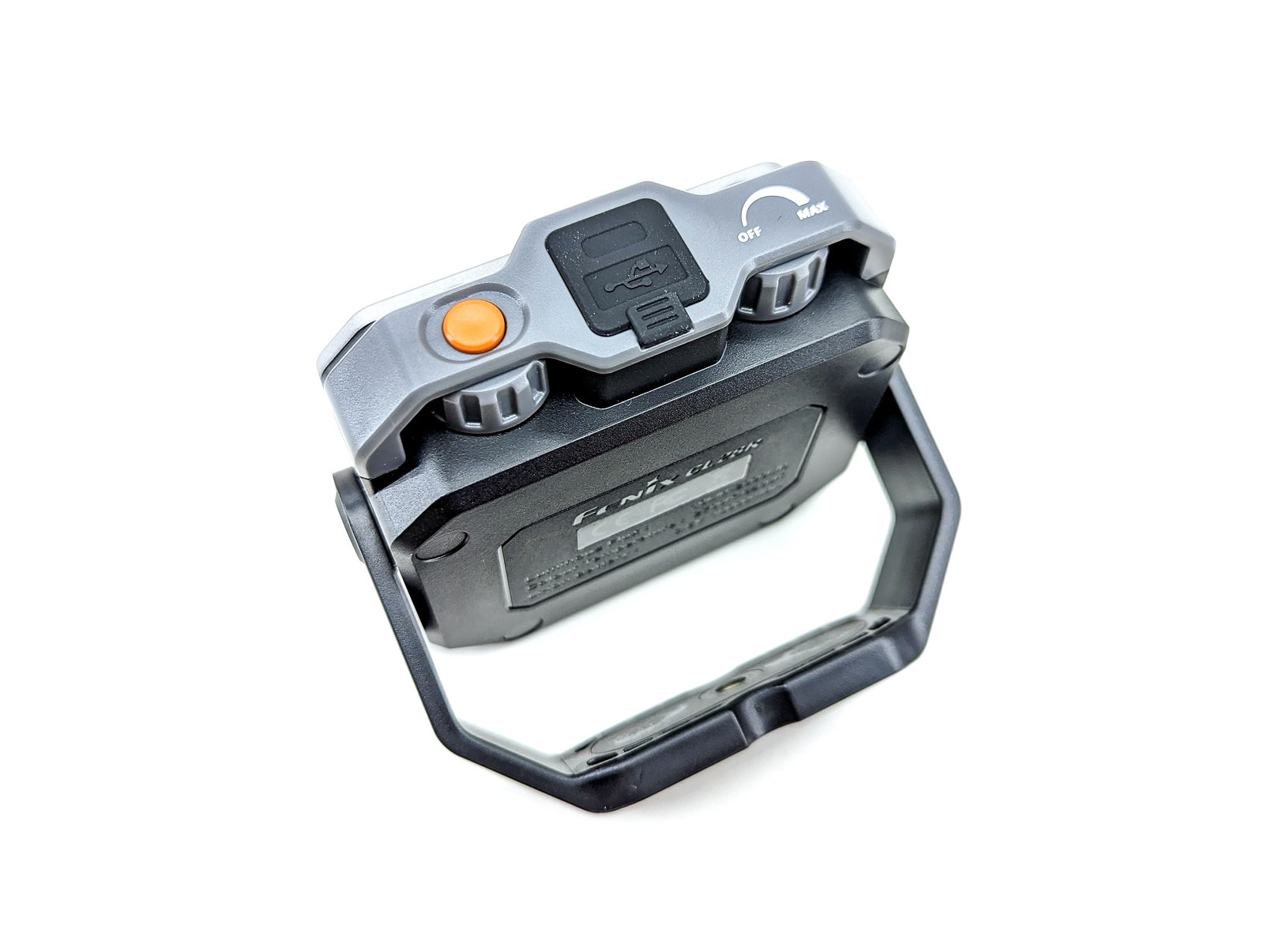
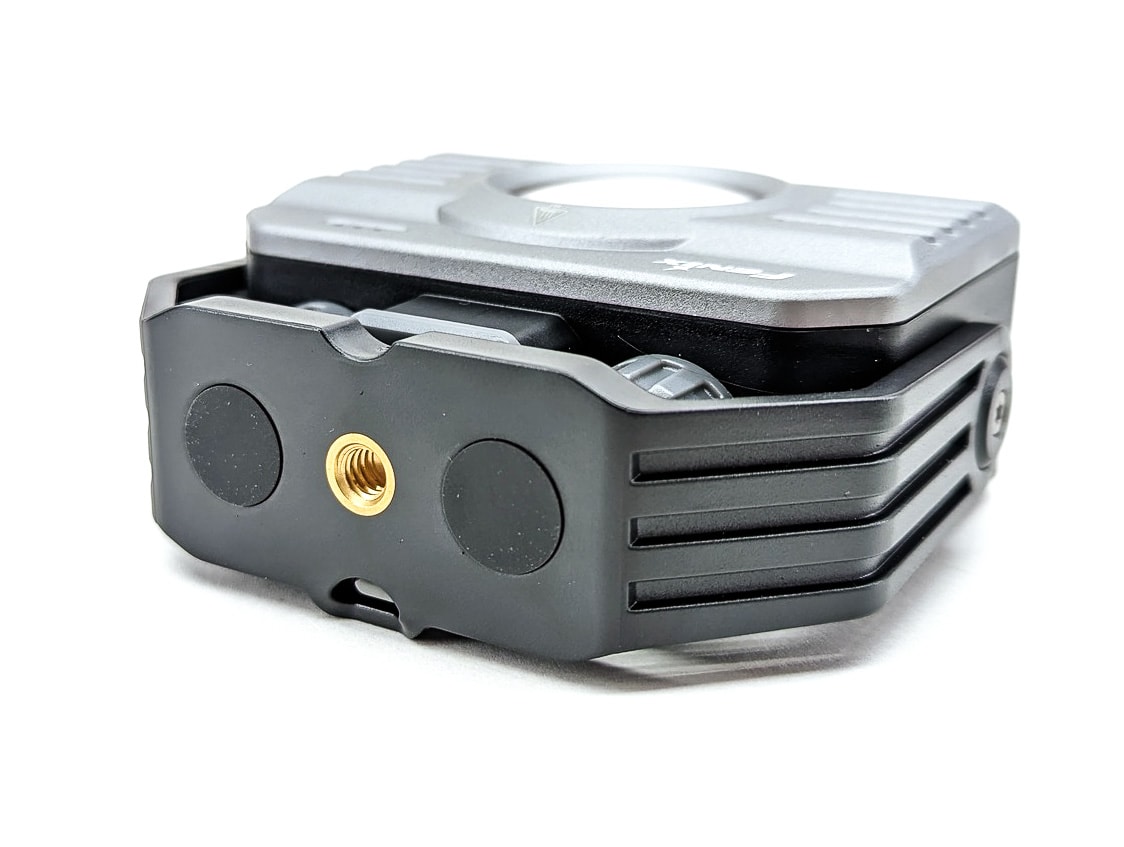
LED, Lens, Bezel, Beam, and Reflector
The light-producing area of the Fenix CL28R is a nice, round section right in the middle of the face of the light. This COB element comes from an unknown source. It has alternating horizontal lines of Cool White and Warm White dies. The selection of these emitters is controlled by one of the rotating dials on the top of the CL28R. The other rotating dial controls the on/off and brightness.
Sometimes you really want a warm white light: usually late at night after the sun has gone down, things are more relaxed… warm white is great. But when there’s a task at hand – say, lighting up that championship horseshoes game – a bright / cool white light might be the ticket. No matter what correlated color temperature you’re looking for, the Fenix CL28R has you covered.
Oh, and that “defect” I thought I saw in the middle of the CL28R’s COB? That’s the red light emitter. The red light can be used as a constant light to help from ruining your night vision or it can be used as a flashing distress signal.
Measurements from my Opple Light Master:
Cool White setting:
- CCT: 7188K
- CRI: 84.1 Ra
- DUV: -0.0113
Warm White setting:
- CCT: 3109K
- CRI: 82.8 Ra
- DUV: +0.0022
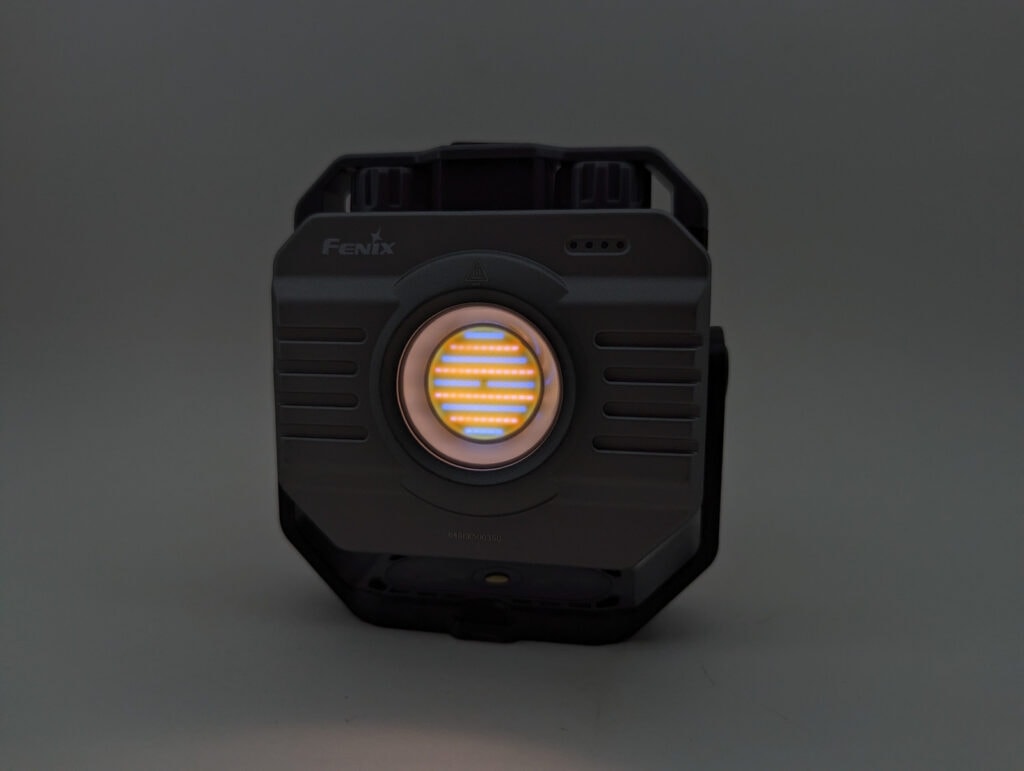
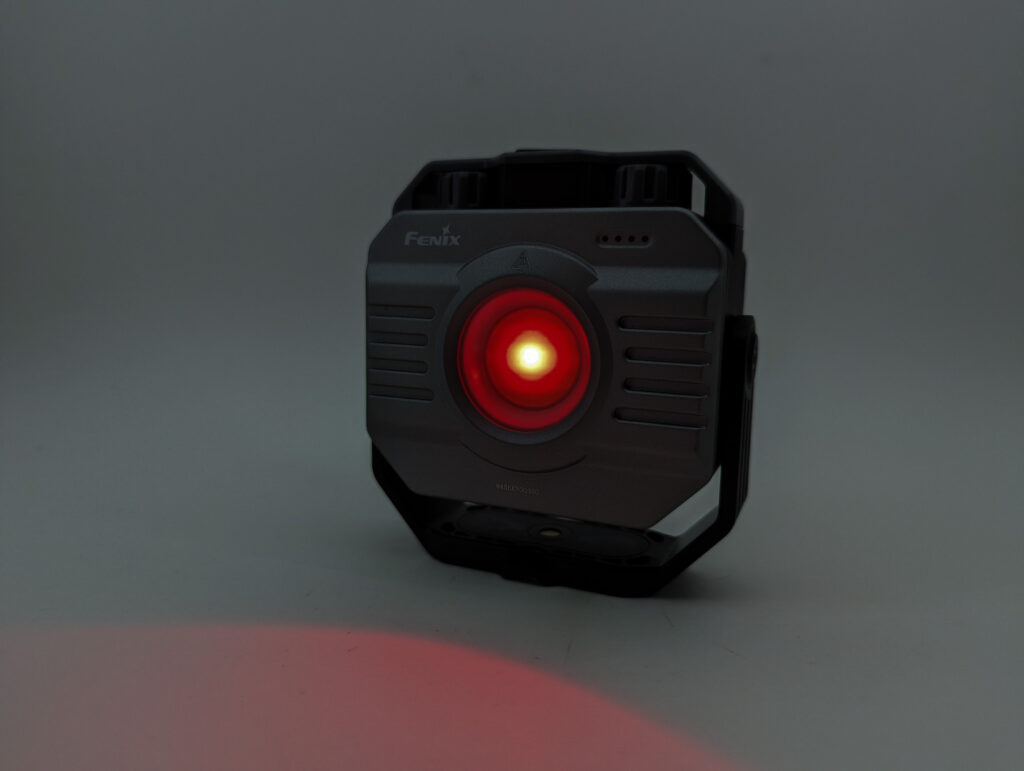
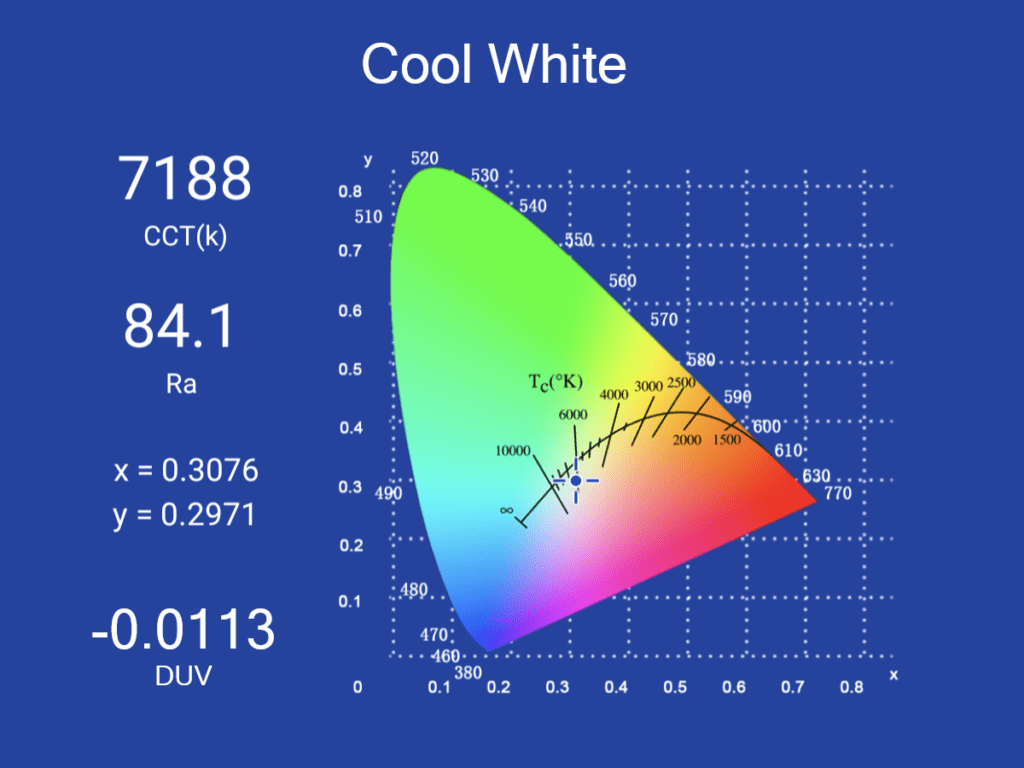
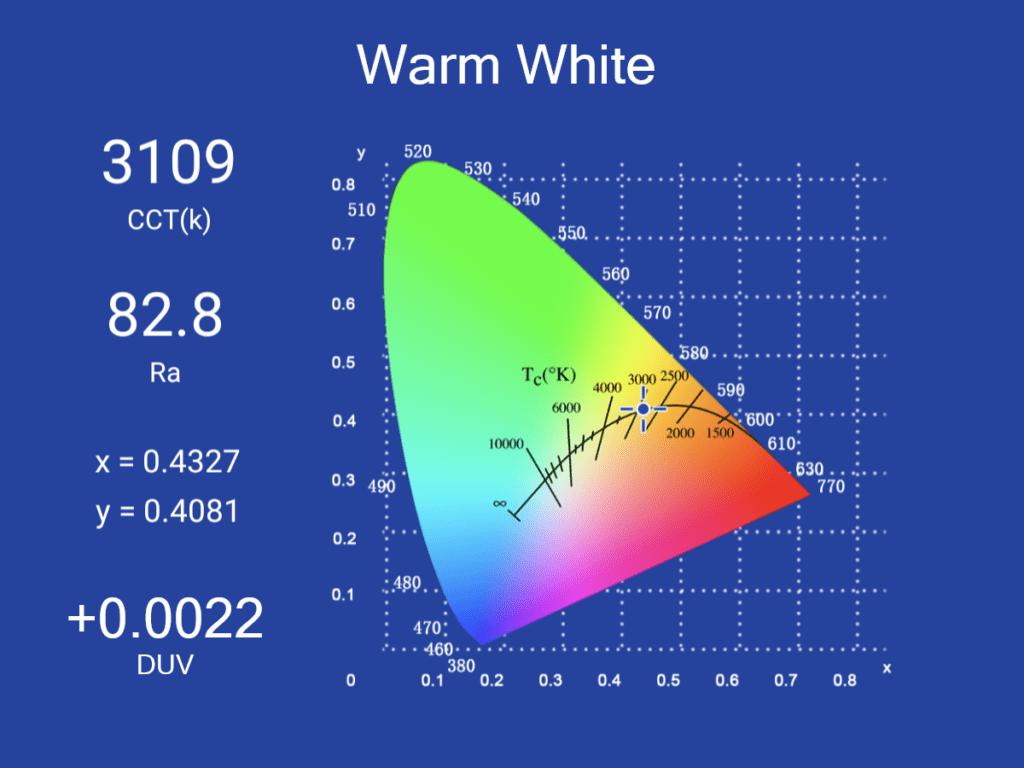
Dimensions and its competition
Dimensions:
| Fenix CL28R | Millimeters | Inches |
|---|---|---|
| Height | 100 mm | 4.0 in |
| Width | 97 mm | 3.8 in |
| Depth | 41 mm | 1.6 in |
Dimensions are rounded to the nearest millimeter, and to the nearest tenth of an Inch.
Weight:
| Fenix CL28R | Weight in grams | Weight in oz |
|---|---|---|
| With battery | 376 g | 13.3 oz |
Weight is rounded to the nearest gram, and to the nearest tenth of an Oz.
Flashlight size comparison with its competition:
Group 1: Fenix CL28R, Olight Odiance
Group 2: Fenix CL28R, Smart Electrician work light
Group 3: Wurkkos HD15, Fenix CL28R, Sofirn HS40

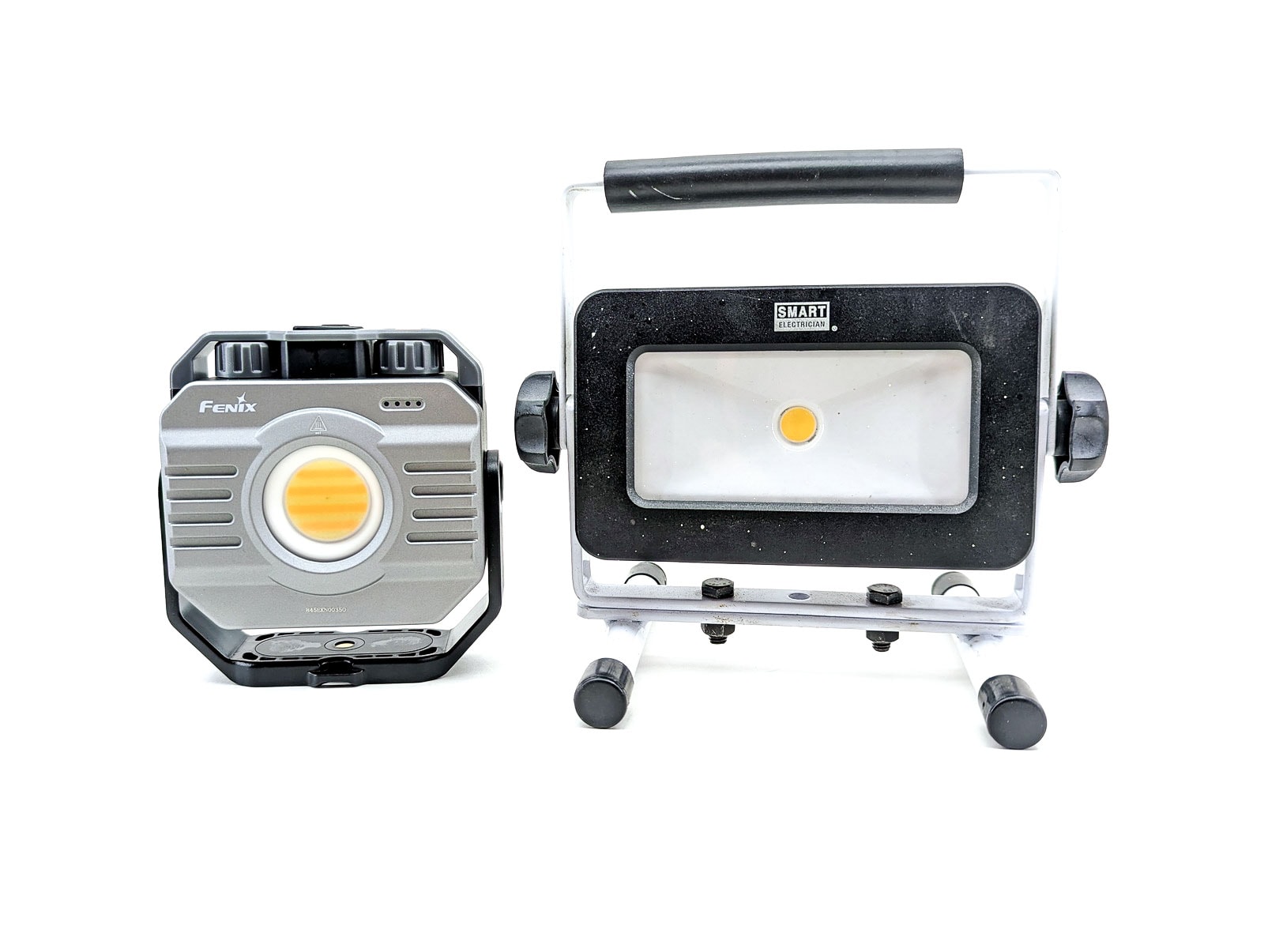
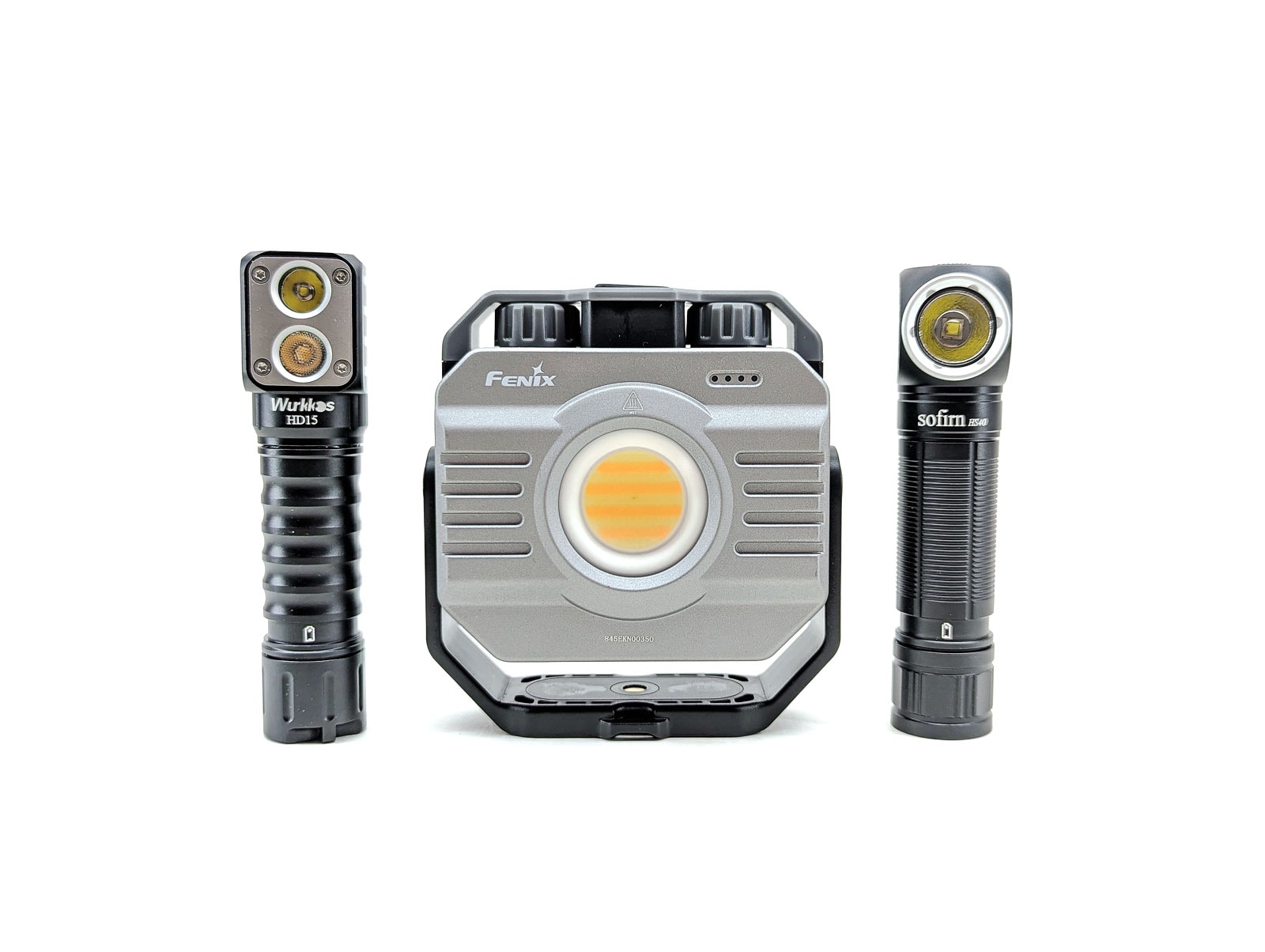
Fenix CL28R UI: User Interface and Driver
Available modes:
- Variable brightness (white), red
Available blinky modes:
- Red flash
From OFF:
- Rotary Switch A: on/off and brightness selection
- Rotary Switch B: color temperature selection
- Orange button, press: battery check
- Orange button, hold: red light mode
From ON:
- Orange button, hold (while in the red light mode): turn off
- Orange button, press (while in the red light mode): select between red flash and red constant
Mode memory:
- N/A
Shortcuts:
- N/A
Low voltage warning:
- The battery level indicator LEDs blink to remind you to recharge the battery
Strobe/blinkies
- When you enable the red light mode (hold the orange button from Off) and then press it again, you can enable a flashing red light mode
Lock-out mode:
- N/A
PWM
- None detected
Additional/summary info on the UI:
- This isn’t your typical flashlight, but the UI with its rotary switches is extremely intuitive and easy to use
Fenix CL28R Charging and batteries
The Fenix CL28R is an all-in-one light with a built-in battery. The only thing Fenix really says about them is that the battery consists of “two built-in 5000 mAh rechargeable batteries”.
On the top of the CL28R between the two rotary switches is a rubber dust cap. Under that are USB-C and USB-A ports. Both ports can be used for charging other devices. When charging other devices, the output is 5V/3A (max), 9V/2A (max), 12V/1.5A (max) using protocols PD3.0/PD2.0, QC3.0/QC2.0. Charging is accomplished through the USB-C port and using the same protocols. I observed a charge rate of 14.32 watts (1.21 amps at 11.95 volts). The charge time was 5 hours and 42 minutes.

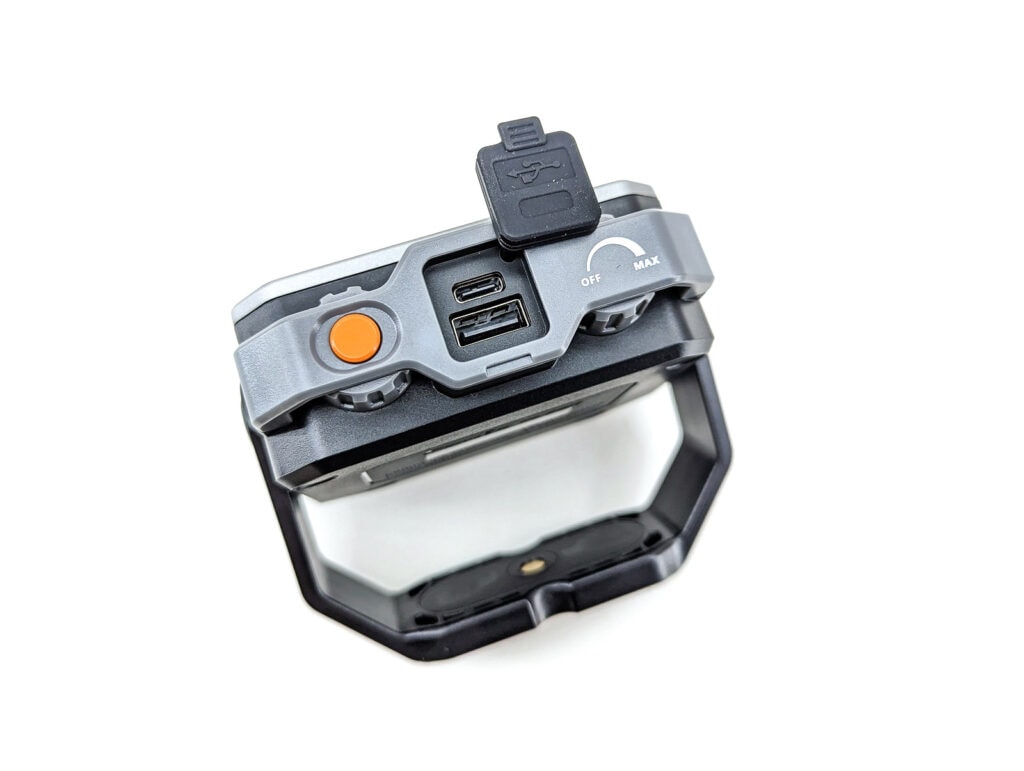

Performance test
Lux was measured by a UNI-T UT383 BT at 5 meters. Lumens were measured in a homemade lumen tube using a VEML7700 sensor, calibrated with a calibration light provided by 1Lumen. Of course, the built-in battery was used for testing.
Lumen measurements (for each mode)
| Mode | Specs | turn on | 30 sec | 10 minutes |
|---|---|---|---|---|
| 500 lm NW | – | 503 lm | 501 lm | 491 lm |
| High, WW | – | 1254 lm | 1221 lm | 329 lm |
| High, CW | 2000 lm | 1632 lm | 1601 lm | 434 lm |
| Red | 9 lm | 6 | 6 | – |
Parasitic drain:
- N/A (unable to test due to internal battery design)
I can generally count on my measurements to be nearly dead-on for Fenix lights. But for some reason, I measured the CL28R as about 20% under Fenix’s spec. It could very well be that the very-floody COB is just a bit more difficult to measure accurately. Or it could actually be lower than spec. I would usually chalk a situation up like this to be the manufacturer exaggerating the output, but that seems out of character for Fenix. Also note that I don’t really know if measuring lumens of red light is accurate in my lumen tube.
Battery Life: Runtime graphs

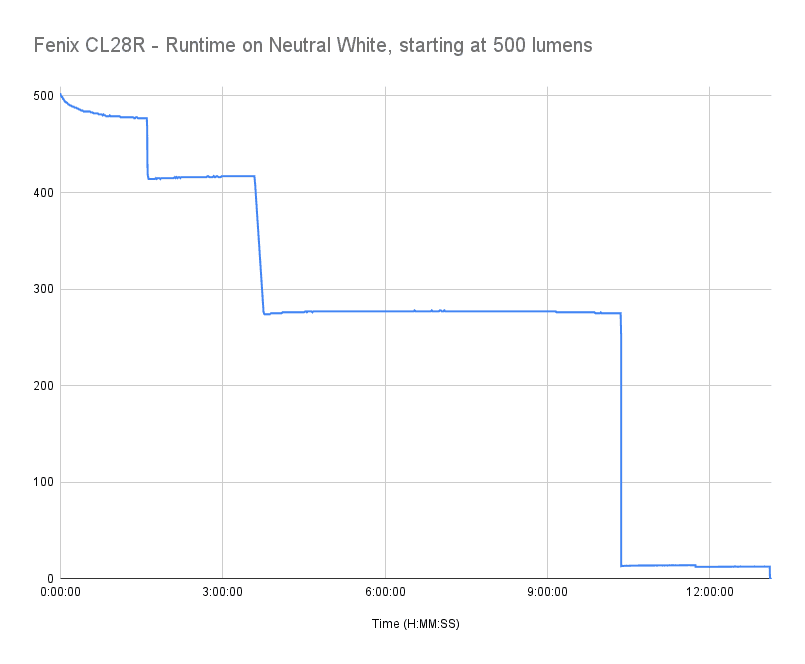
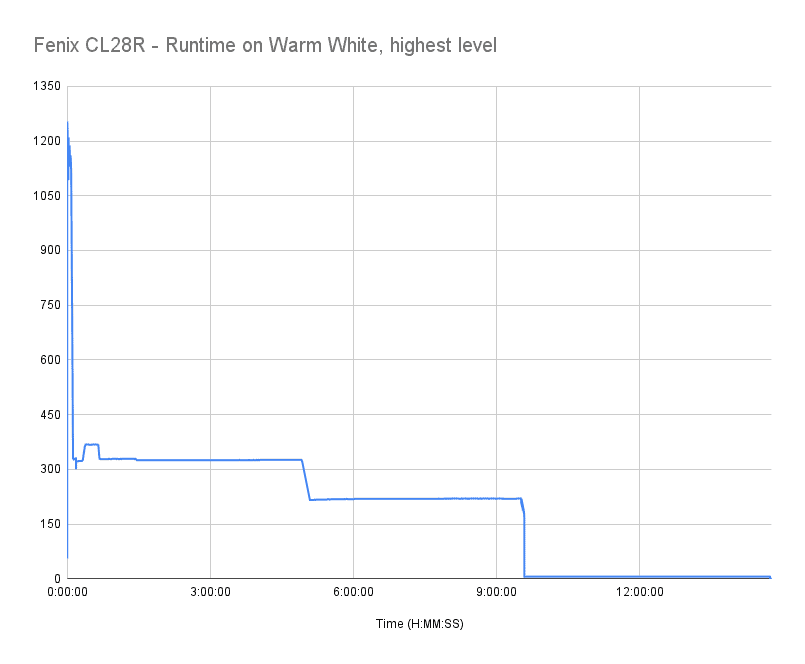
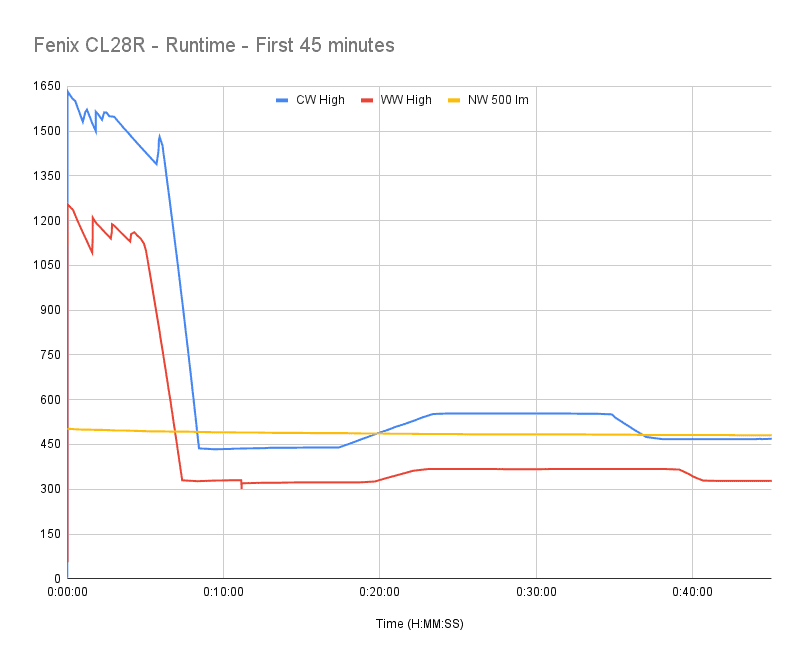
| Mode | Specified | Measured runtime ANSI | Time till shut off |
|---|---|---|---|
| 10 lumens | 360h | – | – |
| 1000 lumens | 10h | – | – |
| 500 lm NW | – | 10h 21min | 13h 7min |
| High, WW | – | 9h 35min | 14h 44min |
| High, CW | 9h | 9h 48min | 14h 10min |
| Red | 170h | – | – |
Battery life came in really close (actually higher) than what Fenix said to expect. Don’t expect the CL28R to hold the full output for the entire runtime, though. Not that many lights do. The high output was maintained for around 8 minutes before throttling back, settling in around 450 lumens for CW and 325 lumens for WW.
About ANSI FL1 standards: The runtime is measured until the light drops to 10% of its initial output (30 seconds after turning on). This does not mean that the flashlight is not usable anymore. The last column shows how long the light actually works till it shuts off. If there is a + symbol, it means that the test was stopped at that particular point, but the light was actually still running. This happens on certain occasions, with certain drivers, firmware, or batteries.
Peak beam intensity and beam distance measurements
Intensity for High was measured at 5 meters after being turned on for 30 seconds. A UNI-T UT383 BT lux meter was used.
| Mode | Specs | Candela measured | Meters | Yards |
|---|---|---|---|---|
| 10 lumens | 3.8 cd | – | – | – |
| 1000 lumens | 440 cd | – | – | – |
| High, WW | – | 660 cd | 51 m | 56 yd |
| High, CW | 880 cd | 800 cd | 57 m | 62 yd |
| Red | 4.6 cd | – | – | – |
Just like with the lumen output test, I measured a bit lower intensity than what Fenix claims.
About peak beam intensity: Peak beam distance according to ANSI FL1 standards: The calculated value of distance in meters at which the flashlight produces a light intensity of 0.25 lux. (0.25 lux is about the brightness of a full moon shining on an object). The columns ‘Meters’ and ‘Yards’ use rounded numbers.
Beamshots
Camera settings and distance:
Beam shots of the building are taken at 30 m (33 yd) using a Pixel 7 set to ISO 800 with 1/10 second exposure time
Beamshots of the following flashlights compared:
- Fenix CL28R, CW
- Fenix CL28R, WW
- Fenix HM60R
- Olight Baton 3 Pro Max
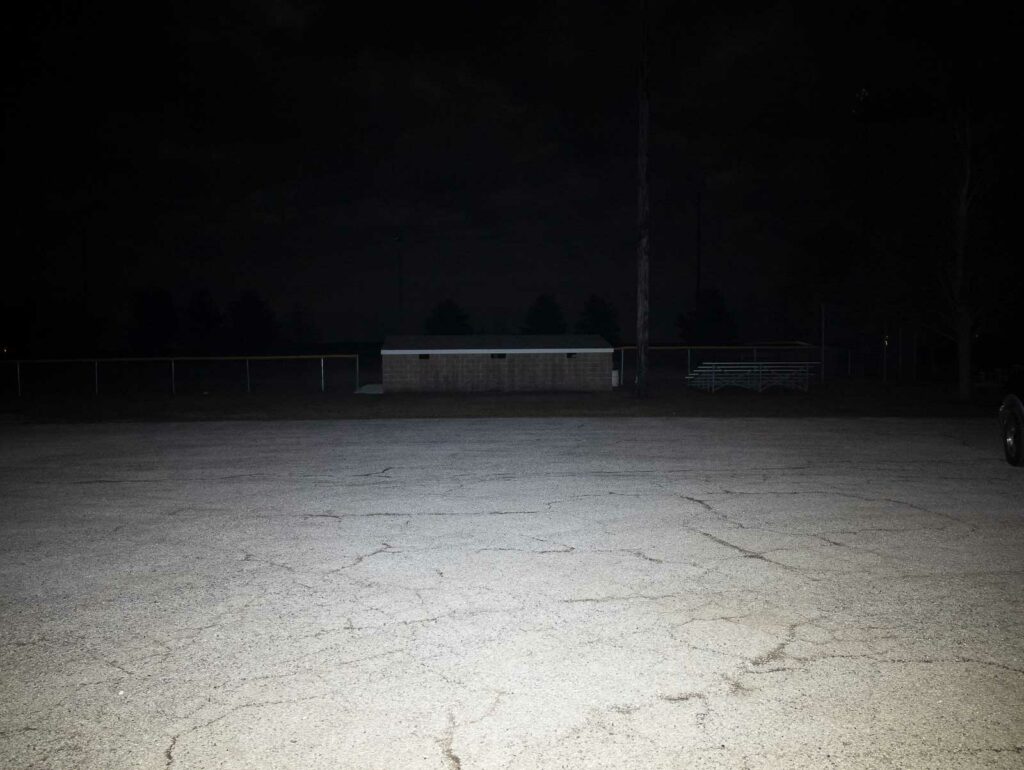



Disclaimer: This flashlight was sent to me for review at no cost by Fenix Lighting US. I have not been paid to review, nor have I been holding back on problems or defects.
Final Verdict
Pros
- Smooth CCT ramping between CW and WW
- Red light mode
- Extremely versatile body / mounting options
- USB-C charging and discharging
- Super easy to use
- Compact enough to take anywhere
Cons
- Seemingly misses output specs
Explanation on star ratings:
1: Avoid: a match would be a better choice – 2: Poor: significant defect or issues; almost unusable – 3: Average: some defects or issues; but still usable 4: Good: recommended (minor issues) – 5: Great: highly recommended

4.5 stars: ★★★★⋆
I love a good flashlight. But I actually get just as much (if not more) use out of my headlamps and utility lights. During the review period of the Fenix CL28R, I had several opportunities come up to put it to good use. It was clutch when going through my house and replacing outlets with the electricity shut off. I appreciate Fenix’s attention to detail and build quality, even if mine seems to miss the output claims. The various mounting options for this utility light / lantern are great: swivel base, tripod mount, and strong magnets. I’ll definitely be getting a lot of use out of this one.
Buy your Fenix CL28R with a discount
Get 10% off every purchase at Fenix Lighting US, by using our exclusive 1lumen discount code: 1lumen10
1lumen selects and reviews products personally. We may earn affiliate commissions through our links, which help support our testing.